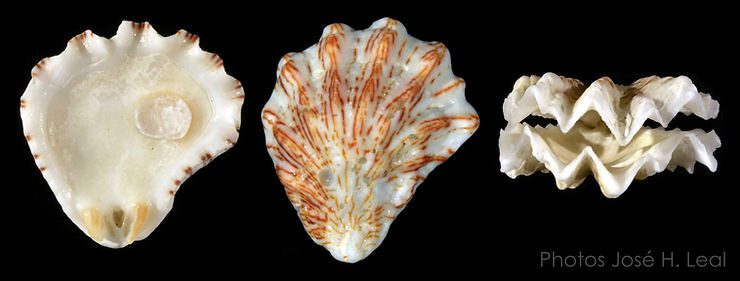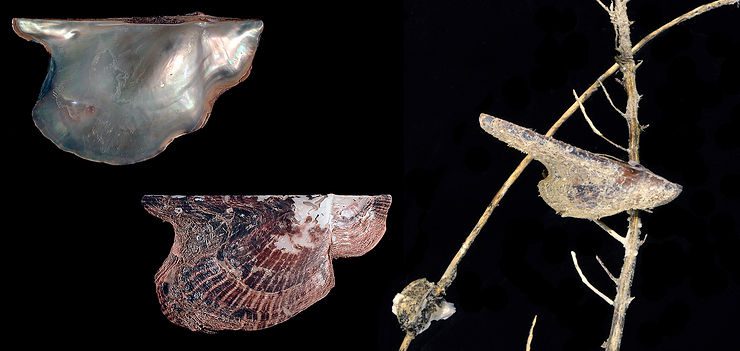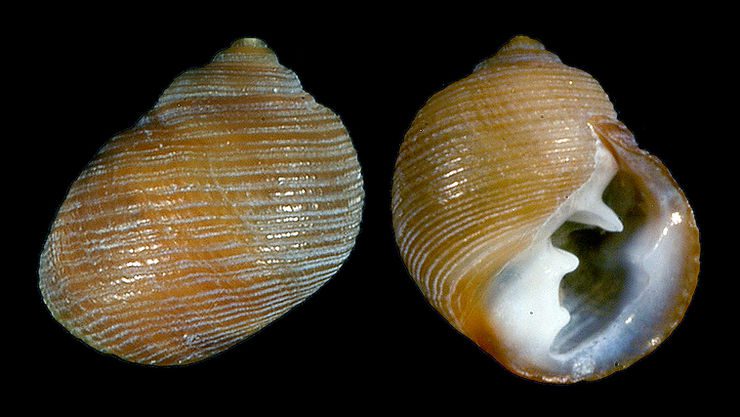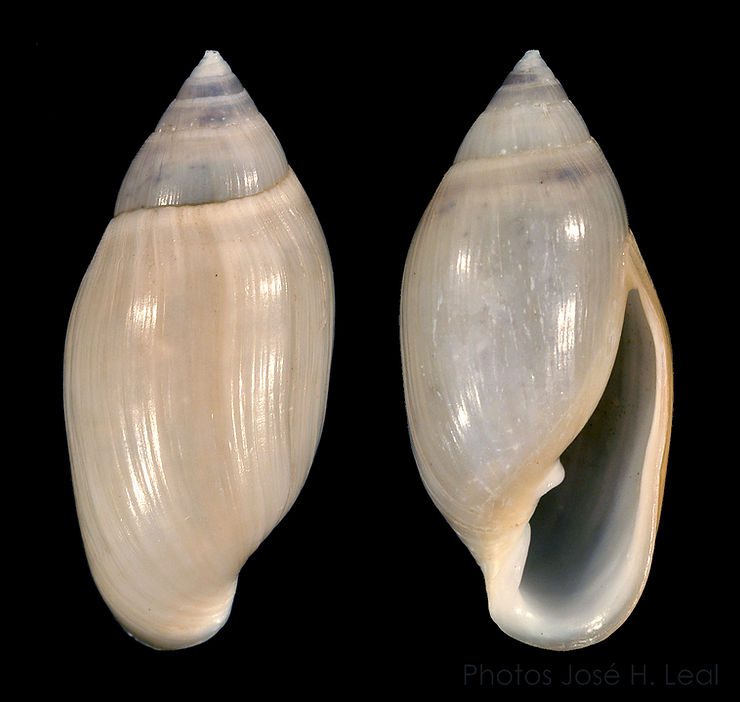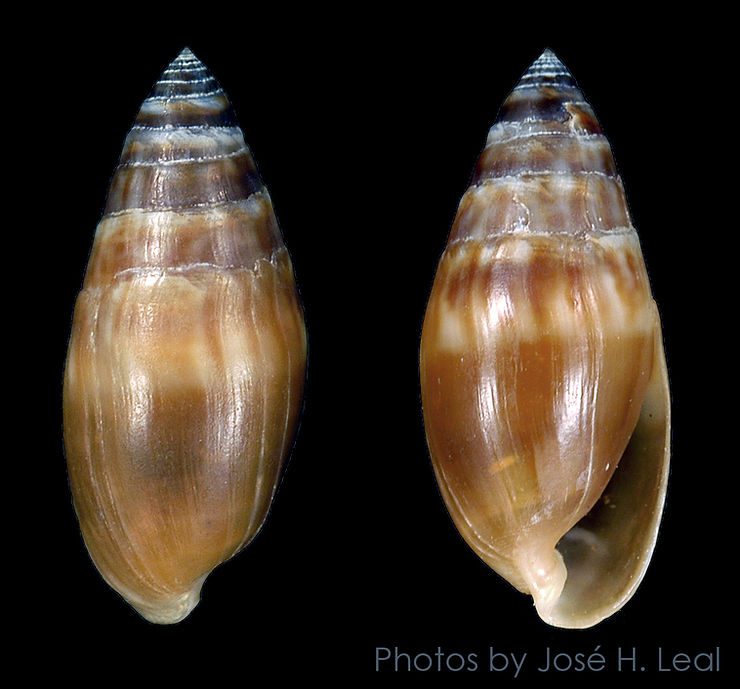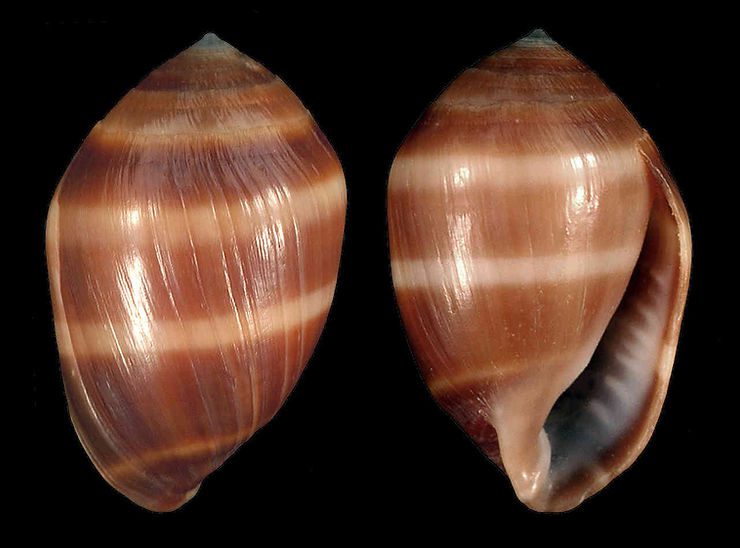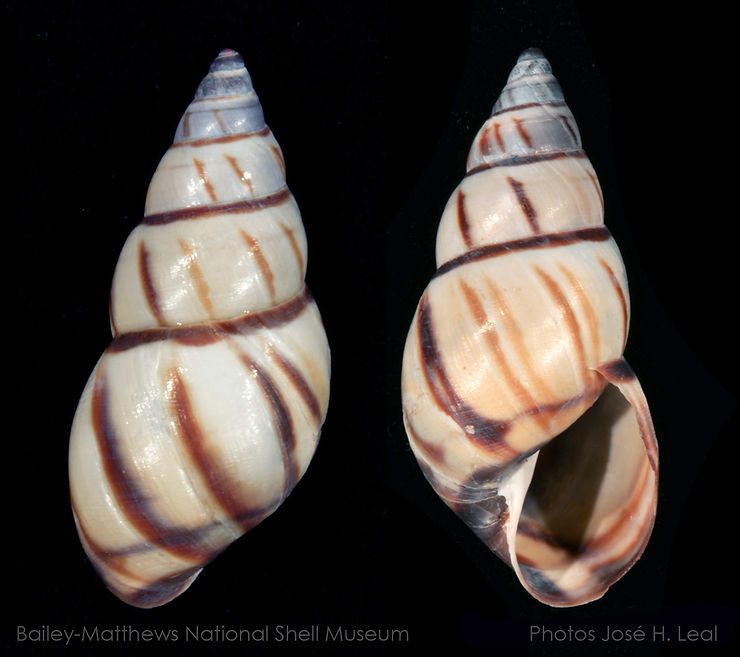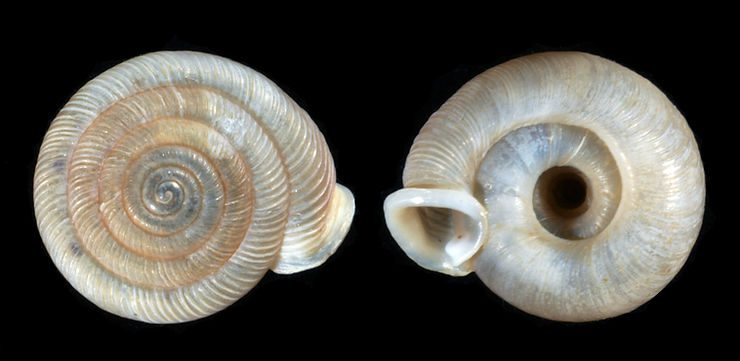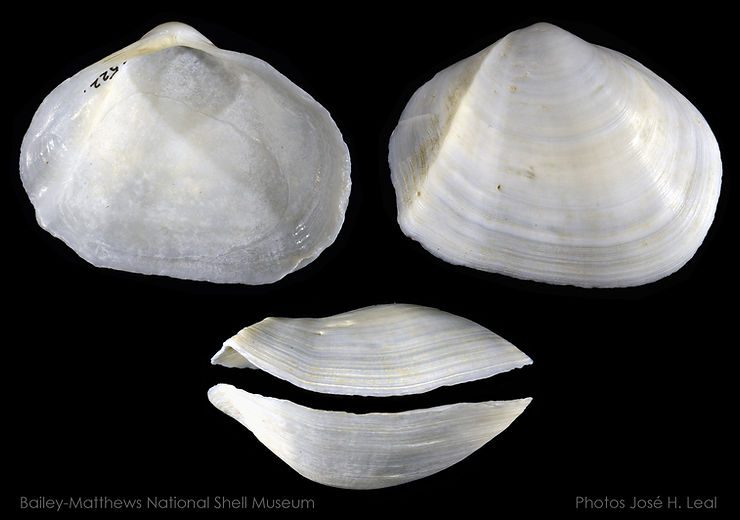
The Atlantic Fat Tellin
The Atlantic Fat Tellin, Leporimetis intastriata (Say, 1827), belongs to the Tellinidae, a family of bivalves that includes many species worldwide, and with at least 15 species locally. Fat Tellins are relatively large, reaching about 3 inches in length. They share the “curved” profile characteristic of members of the family, with the left valve slightly concave and the right one convex (This is shown in the bottom image, where the left valve is below the right one). In addition, the right valve
